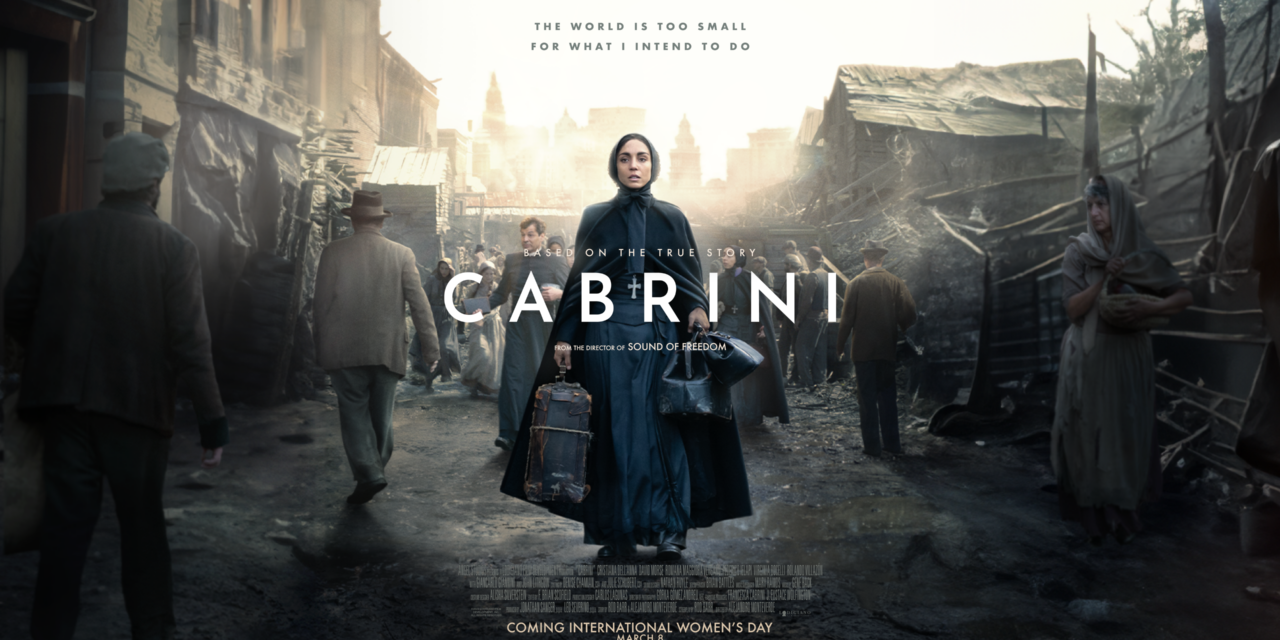Many Roman Catholics will know of Mother Frances Xavier Cabrini (Frances Saverio Cabrini), the first citizen of the United States declared a saint. A remarkable woman, she haled from Italy, came to the United State in 1889, and, after years of arduous work, died in Chicago in 1917, eight years after becoming a naturalized American citizen. Her work consisted of founding hospitals and orphanages, initially in West Park, New York, and eventually over the world.
The journey from Italian obscurity to sainthood was, not surprisingly, difficult. As a result of premature birth, she grew up sickly, but, despite her infirmity, she dreamed of becoming a nun and of going to China. When in 1870 she was refused entry into the Daughters of the Sacred Heart, she took up teaching and in 1880 founded with a handful of other women the Missionary Sisters of the Sacred Heart of Jesus (MSC). With six of these nuns, she petitioned Pope Leo XIII to approve a mission to China; instead, he advised her to go to the New World. That’s exactly what she did, and through various trials, some disagreements with Archbishop Michael Corrigan, and virulent prejudice against Italian immigrants, themselves included, St. Frances founded an orphanage and a school, the first buds of her work among immigrants that would blossom spectacularly over the next twenty-five years before her death.
It takes little imagination to see an inspiring story in Cabrini’s life although I’ll be the first to admit that in an age where people recognize Richard Dawkins’ name, at least in popular culture, better than Frances Cabrini’s, even a little imagination is hard to find. Happily, Angel Studios has turned her story into a full-length film, Cabrini, that premiered in in the U.S. on March 8th, not accidentally, I’m fairly sure, in Women’s History Month.
Is it any good? As Shakespeare’s Falstaff said to Prince Hal, a question to be asked. The answer isn’t as easy as one would like. To the credit of its director and writer (Alejandro Monteverde and Rod Barr), Cabrini avoids the sentimental pitfalls of so many “inspirational” films. The filth and degradation of life in late-nineteenth-century New York City all but guarantee a plot with many unsanitary and unsettling strands. Prostitution, thievery, and bare-fisted violence are all present in the districts where the nuns attempt to establish their first school and orphanage. In the cleaner parts of the city, political corruption and ethnic hatred walk hand-in-hand, offering a believable picture of the barriers Mother Cabrini and her nuns find in their way at every turn.
St. Cabrini’s active compassion for a young prostitute, Vittoria (Romano Maggiora Vergano), and two vagrant and lawless boys, Paolo (Frederico Ielapi) and Enzo (Liam Campora), may be historical, but they may just as likely be emblematic of the hundreds of broken lives she touched and changed. They are believable, even allowing for the fact that Vittoria lacks the pocky appearance one would expect of a young woman who has spent, by her own admission, her life on the streets.
The politicians and respectable citizens somehow manage not to appear the two-dimensional, cookie-cutter racists one might expect. Some in top hats, some in policemen’s uniforms, they are hidebound “dago” haters. Many, however, slowly succumb to Mother Cabrini’s pleas for mercy and humanity, and in the end, she conquers them.
The film does have its flaws. First, it contains a few historical inaccuracies. Archbishop Corrigan did not send the nuns to a brothel for their first night in New York but, perhaps only marginally better, to what Nick Rapatrazone on the NEH site called “a filthy boarding house.” However, some sources report that Corrigan managed to quickly get them into better, albeit temporary, quarters. The film also suggests Cabrini’s nearly drowning as a girl permanently impaired her health. The incident did happen, but, apart from instilling in her a fear of water, her frail health in youth appears to have been due more to her premature birth. As for the presentation of the time and place where Cabrini ministered, the poverty her sisters and she encounter is grittily and realistically depicted; however, the background vista of New York’s skyline from Mayor Gould’s office has one skyscraper too many for the 1890s.
More disturbing are the nods to feminism and the curious ignoring of Mother Cabrini’s faith and prayer life. I do not doubt for one minute that many Catholic priests, right up to the top of the Church’s order, questioned whether a woman was fit for missionary service, especially in a place as destitute and crime ridden as the districts of New York where she ministered. But I cannot imagine Cabrini’s exchange with Mayor Gould near the end of the movie. Impressed with her steadfast courage, he comments, “It’s a shame you’re a woman, Mother. You would have made an excellent man.” Her rejoinder—“Oh, no, Mr. Mayor, no man could ever do what we do”— may be a real show-stopper (in fact, when I watched Cabrini, a woman in the theater let out a rapturous cheer), but her statement doesn’t ring true.
Would a woman who began each day with an hour of prayer and who read devotional works (surely including the Bible) before retiring each night not recall St. Paul’s missionary work or St. Francis among the lepers? The thought beggars belief. For similar reasons, I cannot accept the scene in which Mother Cabrini tells her fellow nuns that they must rely on themselves. Doesn’t it seem strange that she didn’t exhort them to trust in God?
Nevertheless, Cabrini is a very good movie and, for today, a daring one. A biopic for popular consumption of a genuine saint is rare nowadays; one that works is even rarer. Chistiana Dell’Anna brings Cabrini to life with powerful effect and leaves the audience—if my wife’s, my daughter’s, and my opinions are representative—glad to know something of a remarkable Christian. Perfect? Maybe not. But still, in a far from perfect world, Cabrini remains worthy as a testimony to what one godly soul can do to change lives for the better.














